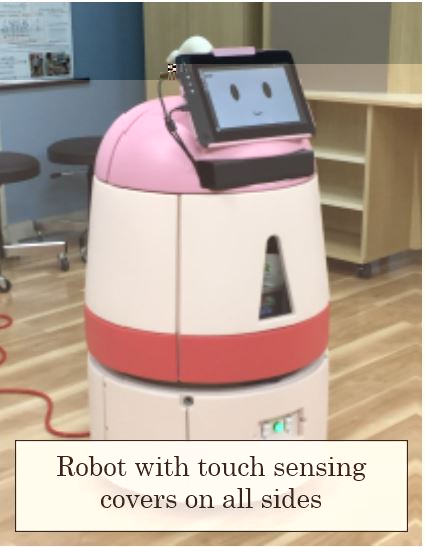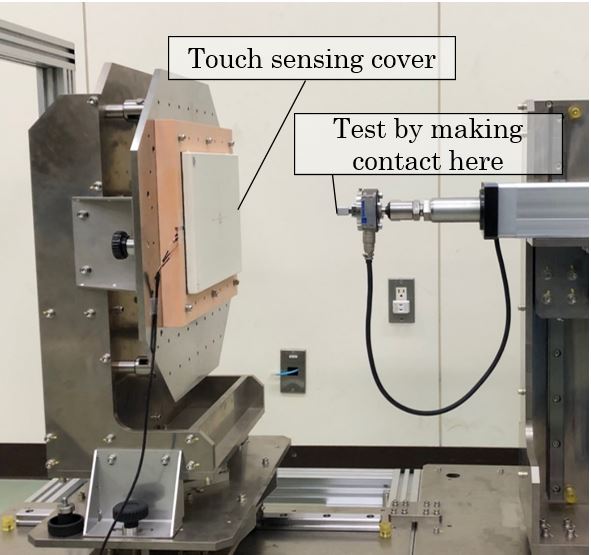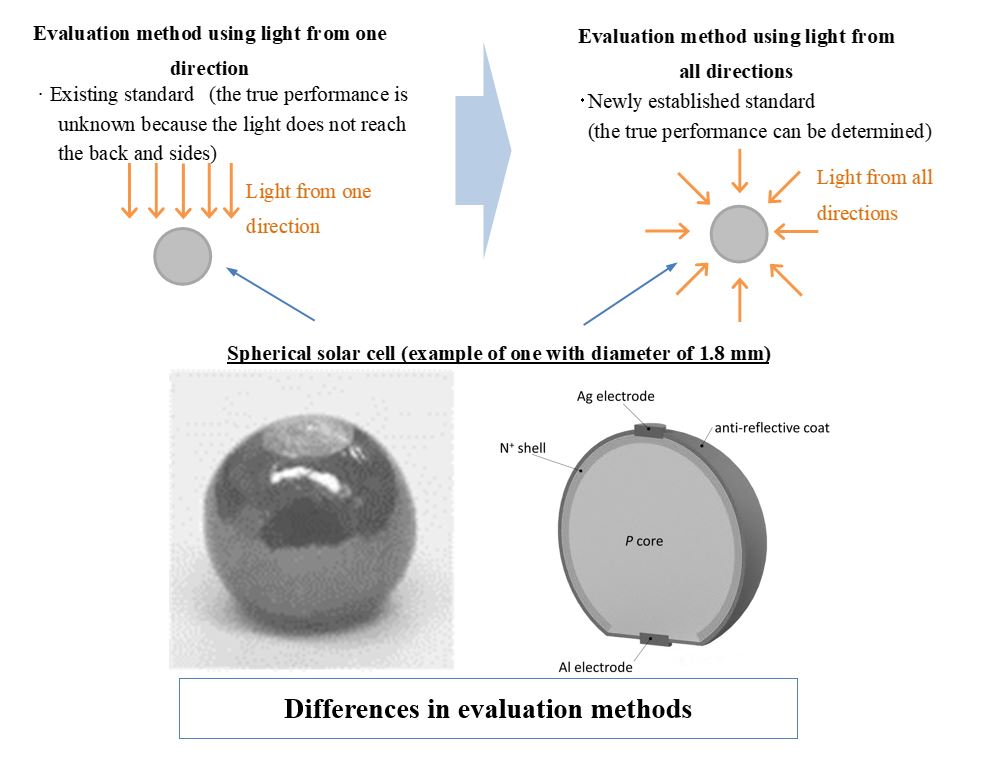- Home
- News Releases
- Back Issues
- March FY2023
- New Establishment and Revision of the Japanese Industrial Standards (JIS) (March 2023)
New Establishment and Revision of the Japanese Industrial Standards (JIS) (March 2023)
- JIS established and revised for methods of testing performance of touch sensing covers of service robots, methods of measuring power generation performance of spherical solar cells, clothing sizes, and more-
March 20, 2023
The Japanese Industrial Standards (JIS) are a collection of national standards stipulating the criteria for mineral or industrial products, data, and services in Japan, including their quality, performance and test methods. The Ministry of Economy, Trade and Industry (METI) has been revising and newly establishing these standards in response to societal and technological changes. METI publicly introduces the newly established and revised standards that are especially important for the economy and the public once a month in a press release.
1. Outline of the new establishment and revision of the JIS
In March 2023, METI established 10 new standards and revised 97 existing ones.
Among these standards, there are 2 revised standards submitted by the Japanese Standards Association (JSA), an Accredited Standards Developing Organization.
The major ones will be briefly explained here. After discussions by the Japanese Industrial Standards Committee, ① and ② were established, and ③ was revised (see Appendix 1).
Follow the link for an overview of the system
① A JIS was established for methods of testing the performance of touch sensing covers for service robots

Example of an application of the touch-sensitive cover
Example of performance test equipment
② Establishment of a JIS for measuring the power generation performance of spherical solar cells
Spherical solar cells are capable of receiving light from all directions, and generate efficiently during all daylight hours. Based on the characteristics of spherical solar cells, a Japanese Industrial Standard (JIS) for measuring power generation performance was established using the Standardization System for the Creation of New Markets.*
The establishment of this JIS is expected to promote the spread of spherical solar cells, expand the adoption of renewable energy, and reduce greenhouse gas emissions (Appendix 3).

③ Revision of JIS on clothing sizes
Most of the clothes sold to the general public have a size indication based on a JIS (e.g., S/M/L). This makes it easier for consumers to buy clothing of the size they want.
There are currently changes in the environment, such as the diversification of purchase forms (e.g., online sales), diversification of consumer preferences, long-term changes in the body shapes of the Japanese people, and an increase in inbound consumption. Therefore, it is necessary to review the JIS appropriately.
This revision mainly adds the SS/3L/4L/5L and unisex sizes.
This is expected to give consumers more choices when purchasing clothing (Appendix 4).
| Label | SS | S | M | L | LL | 3L | 4L | 5L | |
| Basic body dimensions |
Chest | 72 to 80 | 80~88 | 88~96 | 96~104 | 104~112 | 112~120 | 120~128 | 128~136 |
| Waist | 60 to 68 | 68~76 | 76~84 | 84~94 | 94~104 | 104~114 | 114~124 | 124~134 | |
| Height (Reference) |
145~155 | 155~165 | 165~175 | 175~185 | 175~ | ||||
| Label | SS | S | M | L | LL | 3L | 4L | 5L | 6L | |
| Basic body dimensions | Bust | 65 to 73 | 72 to 80 | 79~87 | 86~94 | 93~101 | 100~108 | 107~115 | 114~122 | 121~129 |
| Hips | 77 to 85 | 82 to 90 | 87~95 | 92~100 | 97~105 | 102~110 | 107~115 | 112~120 | 117~125 | |
| Height | 154 to 162 | |||||||||
| Waist | 52~58 | 58~64 | 64~70 | 69~77 | 77~85 | 85~93 | 93~101 | 101~109 | 109~117 | |
| Label | SS | S | M | L | LL | 3L | 4L | 5L | |
| Basic body dimensions |
Chest / bust | -a) | -a) | -a) | -a) | -a) | -a) | -a) | -a) |
| Waist | -a) | -a) | -a) | -a) | -a) | -a) | -a) | -a) | |
| Height | -a) | -a) | -a) | -a) | -a) | -a) | -a) | -a) | |
| Notea) Basic body dimensions indicate values acceptable for clothing manufacturers and distributors. | |||||||||
2. Outline of the JIS
The JIS stipulate the types and quality of products, data, services, etc., test or assessment methods for ascertaining these types and quality, and standard values that businesses are required to meet. Producers, service providers, product users and consumers and other stakeholders make use of these standards for purposes such as being able to access quality products and services with peace of mind.
METI has been establishing new standards or revising existing ones for the JIS in response to technological advancements, changes in the social environment and other factors, as necessary.
For more information on the JIS, visit the following websites:
- The Japanese Industrial Standards Committee website (in Japanese)

- METI website for standardization and certification (in Japanese)
3.Past news releases
For past news releases related to the establishment and revision of JIS, visit this website4.Contact for inquiries about the respective JIS
If you wish to inquire about the details regarding the JIS introduced during this establishment and revision, please contact the division in charge shown in Appendix 1 by email. Please clearly indicate your name, the name of your company (if you send an email as a representative of a company or other entity), and your contact information in the email.
Reference materials
- Appendix 1: List of Newly Established and Revised JIS Publicly Notified on March 20, 2023(PDF:434KB)

- (Appendix 2) JIS Established for Methods of Testing Performance of Service Robots' Covers That Detect Touch within Their Surroundings (in Japanese)(PDF:1,470KB)

- (Appendix 3) Establishment of JIS for Measuring Power Generation Performance of Spherical Solar Cells (in Japanese)(PDF:1,118KB)

- (Appendix 4) Revision of JIS on Clothing Sizes (in Japanese)(PDF:1,194KB)

Division in charge
Standards and Conformity Assessment Public Relations Office, Industrial Science and Technology Policy and Environment BureauRegarding the standards
International Standardization Division, Industrial Science and Technology Policy and Environment Bureau
International Electrotechnology Standardization Division, Industrial Science and Technology Policy and Environment Bureau